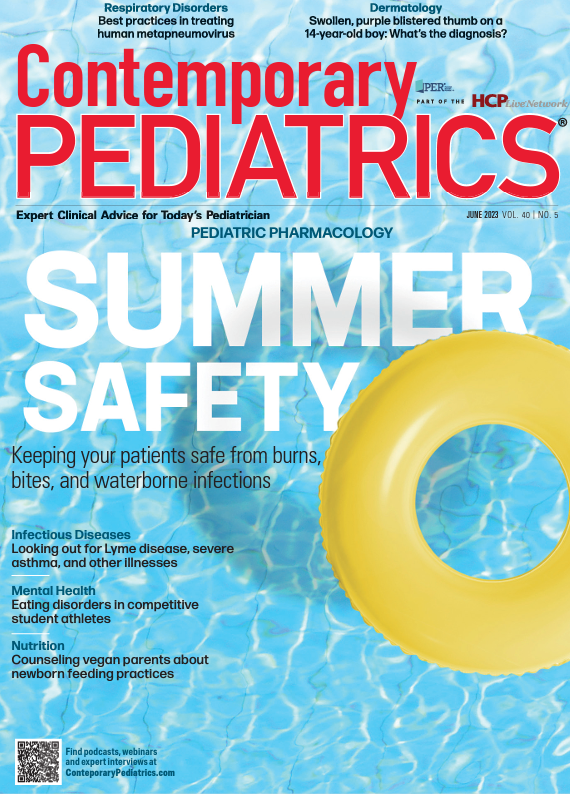Suspected self-poisoning suicide attempts skyrocket during pandemic
Suspected self-poisoning suicide attempts increased 73% for children aged 10 to 12 years and 30% for those aged 10 to 19 years in 2021 compared to 2019, according to a Morbidity and Mortality Weekly Report (MMWR) from the CDC.
Suspected self-poisoning suicide attempts skyrocket during pandemic | Image Credit: © New Africa - © New Africa - stock.adobe.com.

Self-poisoning suspected suicide attempts among children aged 10 to 19 years increased 30% (95% CI = 28.6%-30.9%) in 2021, compared to pre-COVID-19 (2019) rates according to a Morbidity and Mortality Weekly Report (MMWR) from the CDC. An age-group break down of these rates show that there was a 73% (67.4% to 80.0%) increase of suspected self-poisoning suicide attempts for those aged 10 to 12 years, a 48.8% (46.7% to 50.9%) increase for adolescents aged 13 to 15 years, and a 36.8% (35.4% to 38.2%) increase among females. These trends continued into the third quarter of 2022.
In 2020, suicide was the second leading cause of death among children and adolescents aged 10 to 14 years, and the third leading cause for those aged 15 to 24 years, according to the report.
After the onset of the COVID-19 pandemic, which was declared a global pandemic on March 11, 2020, by the WHO, concerns were raised that containment efforts to mitigate the virus through social distancing and quarantine were negatively affecting mental and physical health of children and adolescents. The MMWR states suicide is a growing problem in the United States.
Suspected suicide attempts by self-poisoning among those aged 10 to 19 years were examined by the National Poison Data System (NPDS). Acetaminophen, ibuprofen, sertraline, fluoxetine, and diphenhydramine were substances most frequently involved is overdoses. Acetaminophen-involved overdoses increased 71% (67.4% to 74.9%) in 2021 and 58.0% (54.5% to 61.6%) in 2022, while overdoses involving diphenhydramine increased 24.2% (19.9% to 28.7%) in 2021 and 35.8% (31.2% to 40.5%) in 2022, respectively. Overdoses involving ibuprofen (35.1%), fluoxetine (44.2%), and sertraline (32.2%) significantly increased in 2021 compared to 2019.
A retrospective review of the NPDS database, the data warehouse for all 55 US poison control centers (PCCs), was conducted during January 1, 2016, to September 30, 2022. The last calendar year prior to the pandemic, 2019, was selected as the reference year. In near real time, each PCC submits deidentified case data to the NPDS after providing necessary poison exposure information services to callers from the general public and health care providers, according to the report. Closed cases coded by specialists in poison information as intentional suspected suicide for the 10- to 19-year-old age group was included. Monthly trends in suspected suicide attempt calls were plotted for January 2019 to September 2022 to assess potential pandemic impacts. The study was conducted on deidentified NPSD data and was exempt from the comprehensive Institutional Review Board.
The overall number of human exposure calls to PCCs decrease 3.1% from 2,148,141 to 2,080,917 (P < 0.001) from 2019 to 2021. In the same timeframe, suspected suicide calls increased 29.5%. Calls to PCCs regarding suspected suicide attempts increased for males and females and across all age groups. Call rates made to PCCs from heath care facilities and the general public increased 29% and 33% in 2021, respectively. Admissions to psychiatric facilities increased by 29.3% during 2021.
According to the report, authors wrote, “these findings suggest that mental health of children and adolescents was affected by the pandemic, raising concerns about long-term consequences, especially given that previous attempted suicide has been found to be the strongest predictor of subsequent death by suicide.”
Investigators state it is imperative to mitigate the increase in self-poisoning suicide attempts with suicide prevention measures focusing on children and adolescents while involving key community partners such as families, school teachers, mental health professionals, and public health leadership. Authors note that suicide prevention resources such as supporting youth at risk for suicide, creating protective environments by reducing access to lethal means, improvement to mental health care, and teaching coping and problem-solving skills are available to communities. Further, the 9-8-8 Suicide and Crisis Lifeline, a network of more than 200 crisis centers supported by local and state sources, along with the Department of Health and Human Services’ Substance Abuse and Mental Health Services became nationally available in July of 2022.
According to authors, “the consistency of these findings with those in other published studies highlights the association of the COVID-19 pandemic with harmful effects on youth mental health and underscores the need for further research to confirm these findings and inform prevention strategies.”
Reference
Farah R, Rege SV, Cole RJ, Holstege, CP. Suspected suicide attempts by self-poisoning among persons aged 10–19 years during the covid-19 pandemic — United States, 2020–2022. MMWR Morb Mortal Wkly Rep. 2023;72. doi:10.15585/mmwr.mm7216a3

Newsletter
Access practical, evidence-based guidance to support better care for our youngest patients. Join our email list for the latest clinical updates.